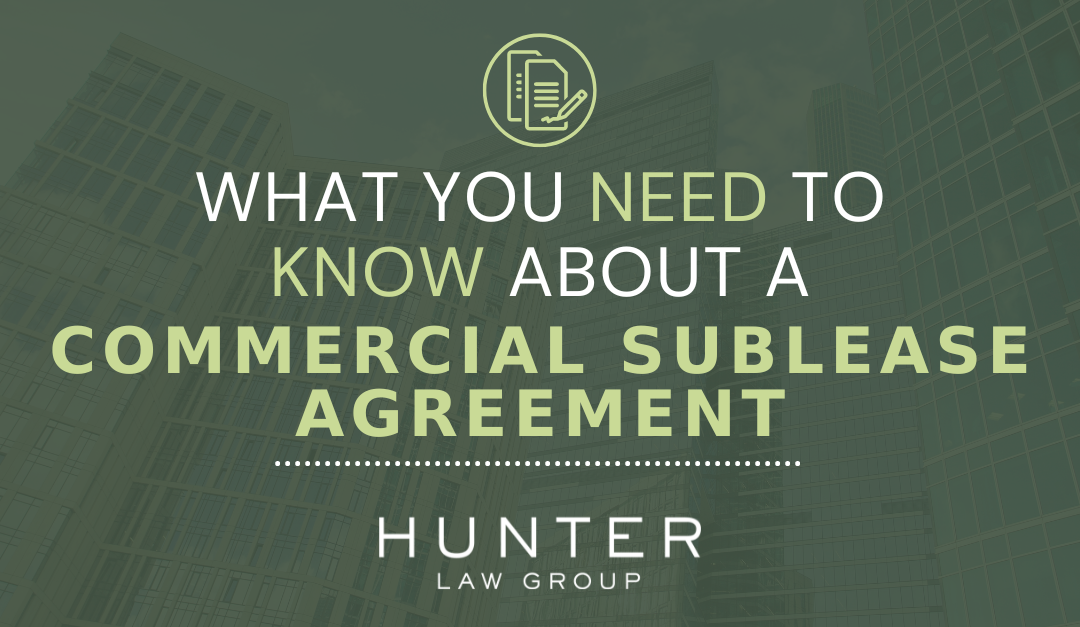With the flexibility people are searching for in their workplaces, a commercial sublease might be the answer business owners need. It is common to think that a lease is written and finalized, leaving both the tenant and landlord linked together for the time being, but there are many ways to make a lease work for you rather than the other way around. No matter what, it is essential to read through the initial lease agreement thoroughly and understand the rights given to the tenant. This can tell you whether or not a commercial sublease is acceptable.
If you are currently under a lease and are experiencing changes in your business or are looking for a flexible rental building for your start-up or current company, a commercial sublease might be the best option.
What Is A Commercial Sublease?
A commercial sublease is an agreement between the current tenant and the new tenant to lease the space together. The sublessee would go through the primary tenant rather than the property owner. The first tenant would still be responsible for paying the rent at the beginning of the month, leading to the sublessee giving their portion of the rent to them, and then the tenant can give it to the property manager.
A commercial sublease can look different for many businesses. Some businesses might decide it is best to work together in the same building, such as an office that is downsizing and wants to rent out the other half of its floor. Or, the initial business decides to move on from the rental but does not want to cut the lease short, so they look for a sublessee to move in early.
When Does It Make Sense?
Subleasing can make sense to the landlord, primary tenant, and sublessee for different reasons, but in the end, they all can benefit. For a landlord, if a sublease contract is within the rights of the initial lease agreement, having a trusted tenant sublease the property can only ensure that they get the proper rent on time each month. It can also help them avoid dealing with multiple tenants.
A commercial sublease can make sense to the initial tenant if they are preparing to downsize, move locations, or close their business. They can get a new tenant to replace them or help with the current rent, leading them to save money and allow a new business to utilize the space and grow. This can also help them avoid any lease termination fees.
For the business joining the lease, a commercial sublease can be excellent for those looking to save money and find a flexible lease agreement that suits their situation. A commercial sublease can be a better option if businesses are just starting out or only need a little room.
The Pros and Cons of a Commercial Sublease Agreement
Pros:
- For both parties, a commercial sublease agreement can be cheaper. The primary tenant will not have to pay the total rent or any rent at all, and the sublessee will get a lower-than-average price for a business space.
- For a sublessee, if the building and initial tenant are in the same industry, you might not need to purchase the equipment you need to do your job, such as printers, kitchens, conference rooms, or restaurant machinery.
- The flexibility for both the primary tenant and the sublessee can be enough reason to agree to a commercial sublease. The primary tenant is provided rent money and an out if they choose to leave the building, and the sublessee can have access to a shorter lease term or have a secured property after the primary tenant leaves.
Cons:
- As a sublessee, you are subject to the underlying lease. The primary tenant must follow the rules and regulations, and so do you.
- You are unable to modify the space in ways that would suit you. Unless the primary tenant allows you to have the full space yourself, you are simply a tenant to them and can only have customization within the property with permission.
- Maintenance for a sublessee might take longer as well. Since you are not connected to the maintenance crew as close as the primary tenant, you have to go through the initial tenant to get any concerns fixed.
How To Keep Yourself Safe
Primary tenants and sublessees should consider the risks associated with triggering a lease default. To ensure both parties are safe, reading the initial lease carefully and ensuring that both parties are correctly adhering to the rules and regulations set in place can ensure the landlord has less reason to dissolve the lease.
If you are the initial tenant, it is crucial to assess the subtenant’s financials carefully to ensure they will be able to meet your qualifications and pay the rent that you propose. This can keep you a responsible tenant in the eyes of the landlord and ensure every party abides by the lease.
A commercial sublease can be extremely beneficial for multiple parties. If you have any questions about moving forward with a commercial sublease, reach out to the team at Hunter Law Group.
